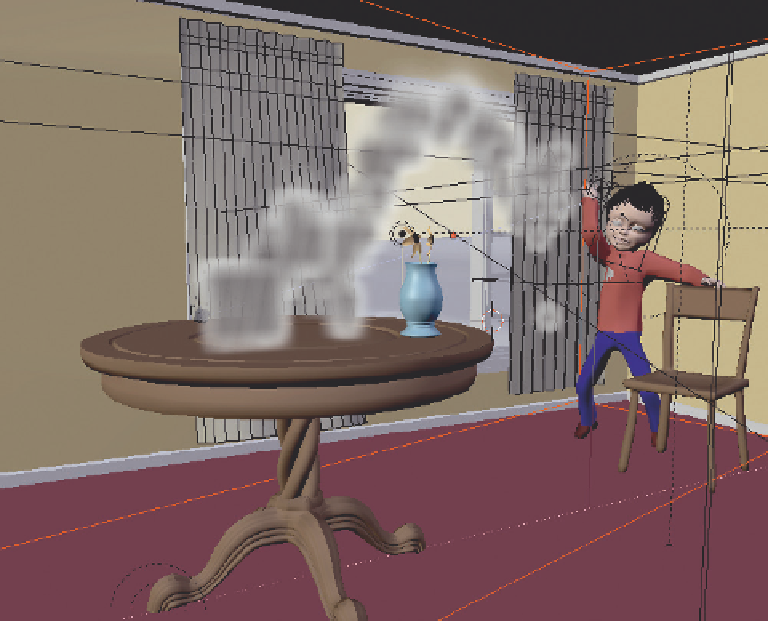Graphics Reference
In-Depth Information
Figure 13.19
The state of smoke with default settings.
Figure 13.20
shows a new material, added to the Domain object. The smoke itself is attached to the
Domain, even though it appears to come from the Flow object, so it is the Domain that receives the
material. The material types selector at the top of the window has been set to
Volume
. The only things
to really mess with for basic effects in this panel are the
Density
and
Reflection
color. The Reflection
color is what you would think of as the main color control for the smoke. Make it red, the smoke casts
to red. The Density will be controlled by a texture, which in turn is controlled by the smoke simulation.
When we want a material property to be controlled by a texture, what do we do? Set it to 0.0. So, change
the Density material value to 0.0. The material preview goes blank.
Rendering now would produce a great gob of nothing. We need to hook up a texture to make use of
the simulation data. Add a new texture to the material, and set it to the
Voxel Data
texture type. This
type makes use of “volume pixel” data (a.k.a. “voxels”), which is what the smoke system generates.
Figure
13.21
shows the Voxel Data texture properties.
File Format
defaults to Smoke, but you have to select
the proper Domain object right below it. Note the name of your Domain object and set it here. Note
once again that you do
not
use the Flow object.

Search WWH ::

Custom Search